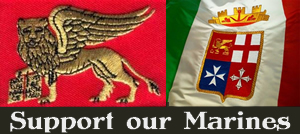
-
Moderatore

 Nambu Tipo II Modello B
Nambu Tipo II Modello B
untitled1.png untitled2.png
tumblr_nyw09gjh2c1uryk28o1_500.jpg
Like many of the major powers at the beginning of the Second World War the Japanese had shown little interest in submachine guns. Purchasing a limited number of Bergmann MP28/IIs and MP34s for testing and limited issue during the late 1930s. Alongside these foreign designs some indigenous development also took place with Kijiro Nambu designing several interesting submachine guns.
There is relatively little information available about Nambu’s submachine guns with even designations muddled. Author William Easterly notes that the model featured above was described as the Type II Model B. Developed in 1934, the earlier Type I chambered the 8mm Nambu pistol cartridge and fed from a 50 round curved magazine. The pistol grip acted as a magazine housing, a feature predating both the Sa vz. 23 and the Uzi. Other than the weapon’s pistol grip it followed conventional designs from Bergmann and SIG using a tube receiver and a blowback action.
The Type II Model B, shown above, differs significantly from the earlier Nambu submachine gun. It has full wooden furniture with a cutout for a trigger guard, and a semi pistol grip stock. The magazine loads just ahead of the trigger guard and the Model B feeds from 30, rather than 50, round magazines. The design retains the tube receiver and used a telescoping recoil spring and a pneumatic buffer to slow the weapon’s rate of fire.
The Japanese Army were allegedly uninterested in the new weapon, however, it has been suggested that the Navy purchased a small number for testing. Samples were certainly produced, probably by Nambu’s company, Nambu-Ju Seizosho K.K. One of these samples was found at the Japanese headquarters in Singapore at the end of the war (see image #2).
A British technical report produced by the Chief Inspector of Small Arms in Bengal, India describes the standard of the captured Model B’s workmanship as being “above that normally found in Japanese small arms.” The report describes the Model B’s pneumatic rate of fire reducer as having “five holes of different sizes in the cap of the buffer housing.” The rate of fire could be varied by the rate at which the air was pushed out of the valve in the buffer. It is unknown on which gas setting the weapon was tested on but a rate of 820 rounds per minute was recorded.
The weapon had a safety on the left side of the receiver which locked the trigger.Overall it weighed 6.25lbs, was 26 inches in overall length and had a tangent sight, graduated out to an optimistic 600m. Some sources suggest that less than fifty Type II Model B’s were produced with several now residing in reference collections.
Sources:
C.I.S.A, India, Technical Report No. J-28 on 8mm Unknown Type Japanese Machine Carbine, via ForgottenWeapons, (source)
Many thanks to Peter Hokana for kindly allowing the use of his photograph
Nambu Machine Pistols, W. Easterly, (source)
Tag per questa discussione
 Permessi di scrittura
Permessi di scrittura
- Tu non puoi inviare nuove discussioni
- Tu non puoi inviare risposte
- Tu non puoi inviare allegati
- Tu non puoi modificare i tuoi messaggi
-
Regolamento del forum





 Rispondi citando
Rispondi citando







